On this weeks Newsflash we hear how the development of salt-tolerant GM crops could help to feed the world and how branching blood vessels could stop you getting the best from statins. Also how the turtle got it's shell and Darwin meets hip hop in the rap guide to evolution. Plus we look back to 1867 and the first explosive demonstration of dynamite...
In this episode
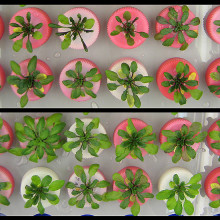
Salt-Tolerant GM Plants
Australian scientists have developed a technique to make plants salt-tolerant.
Writing in the leading plant sciences journal The Plant Cell, Adelaide University researcher Professor Mark Tester and his team explain how they have used genetic techniques to increase the activity, in the plant's root tissue, of a gene called HKT1;1.
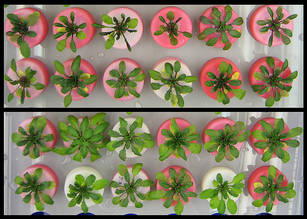 "This gene transports sodium out of cells," explains Tester. "So what we've done is to discover a way to increase its expression selectively in the cells that surround the xylem vessels. These are the conduits, like tiny pipes, that carry water and salts from the roots up into the plant shoots. What we have found is that when HKT1;1 activity is increased the plants pump more sodium salts out of the xylem and into specialised stores within the root tissue."
"This gene transports sodium out of cells," explains Tester. "So what we've done is to discover a way to increase its expression selectively in the cells that surround the xylem vessels. These are the conduits, like tiny pipes, that carry water and salts from the roots up into the plant shoots. What we have found is that when HKT1;1 activity is increased the plants pump more sodium salts out of the xylem and into specialised stores within the root tissue."
The result is that much less sodium makes its way up the plant, preventing damage that would normally occur through high sodium causing shoots and leaves to age prematurely.
"This is why plants won't normally grow well on salt-contaminated land because they end up devoting most of their energy to replacing damaged tissues rather than growing. These modified plants, on the other hand, even when cultivated on the equivalent of highly salt-contaminated land, show no ill effects," Tester explains.
The team made the discovery using Arabidopsis, the scientist's plant equivalent of a fruit fly, but will it work in important food crops?
"We've been able to show this this same trick also works in rice, and we're currently testing cereal crops, like wheat, barley and maize at the moment," says Tester. These latter plant groups have turned out to be slightly trickier to work with because the promoter system - the DNA sequence that that team have used to turn on the sodium-pumping gene in Arabidopsis and in rice - does not appear to work the same way in cereals; instead the team have had to identify an alternative way to boost HKT1;1 activity.
The discovery is a major step forward because currently about one third of the world's food is grown on irrigated land, one-fifth of which is now significantly affected by salinity problems. As food demands continue to increase, coupled with the effects of climate change like unreliable rainfall and coastal flooding, the problem is likely to become much worse. Crops that can tolerate conditions like these may be critical in an uncertain future. But are they safe?
"We have checked these plants carefully and there is no evidence that the changes we have made are altering the accumulations of other salts or chemicals within the plant with the exception of a small change to the level of potassium," says Tester. "So we're satisfied that these plants do not pose a threat."

World Population Day
Every single minute, a woman dies from pregnancy related causes somewhere in the world. That's one statement from the Population Institute in Washington made to highlight World Population Day, held by the United Nations Population fund on the 11th of July.
 Global population is growing at a phenomenal rate - It took all of human history until 1830 for world population to reach one billion. The second billion was achieved in 100 years, the third billion in 30 years, the fourth billion in 15 years, and the fifth billion in only 12 years. Population is predicted to exceed 9 billion by 2050.
Global population is growing at a phenomenal rate - It took all of human history until 1830 for world population to reach one billion. The second billion was achieved in 100 years, the third billion in 30 years, the fourth billion in 15 years, and the fifth billion in only 12 years. Population is predicted to exceed 9 billion by 2050.
We're made very aware of the threats of a changing climate, how rising sea levels could force millions out of their homes, threaten food security and increase conflict, but rising population can only make all of these effects worse. Larger populations need more land for crops, reducing forest cover, decreasing biodiversity and ecosystem services and actually making climate change worse.
Overpopulation is also at the root of more immediate human problems - poverty, HIV/AIDS, childhood illness, access to drinking water and the effectiveness of vaccination programmes are all made worse by being overpopulated.
World Population day hopes to raise awareness of the issues of overpopulation, especially to governments who are considering ways to save money in the current financial climate.
There's no quick fix for overpopulation, and it's certainly not something we can solve in a single day, but an awareness of the problems and opportunities can help us, and our governments, make the right decision.
Investments in women's education, family planning, public health and other social services can make a difference, and should not be allowed to suffer because of the global financial crisis. Already, developing nations are feeling the consequences of the financial crisis in the west -the credit crunch has affected funding for HIV/AIDS programmes in Africa; 90% of family planning in Uganda relies on overseas funding and half of the funding for healthcare in Africa comes from funding sources in America. A financial crisis in the west risks becoming a humanitarian crisis in the developing world.
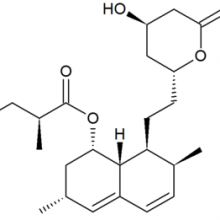
Branched Blood Vessels Slow Statins
The shape of blood vessels may affect how effective Statins are against preventing heart disease, according to new research published in the Journal of Biological Chemistry this week.
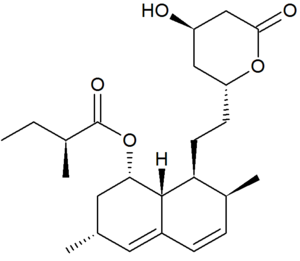 Statins lower levels of Low-Density Lipoprotein, or LDL, Cholesterol found in the plasma of our blood, and so help to prevent the fatty build-ups that lead to blocked arteries and heart disease. They're very widely prescribed to people at high risk of heart attack, and estimated to save nearly ten thousand lives per year. This research, from a team at Imperial College London, is the first to show that biomechanical forces effect how well Statins will perform.
Statins lower levels of Low-Density Lipoprotein, or LDL, Cholesterol found in the plasma of our blood, and so help to prevent the fatty build-ups that lead to blocked arteries and heart disease. They're very widely prescribed to people at high risk of heart attack, and estimated to save nearly ten thousand lives per year. This research, from a team at Imperial College London, is the first to show that biomechanical forces effect how well Statins will perform.
Statins are thought to help by releasing anti-oxidants through boosting levels of an enzyme called heme oxygenase-1, of HO-1, which is created by the endothelial cells that line our arteries. By measuring the levels of HO-1 in different parts of the circulatory system, Dr Justin Mason and colleagues were able to ascertain how useful Statins are under different conditions.
They found that the increase of HO-1 was significantly higher in cells exposed to fast, regular blood flow, when compared to areas where blood flow was sluggish. This means that at areas where blood vessels branch and flow is disrupted, Statins show fewer beneficial effects.
Unfortunately, arteries do not clog up in a uniform way, and are more likely to develop fatty deposits in the areas where blood moves most sluggishly - exactly where the Statins have least effect. Other research has shown that the cells lining our arteries can sense the 'shear stress' exerted by passing blood, and this alters their ability to keep the artery healthy. Dr Mason described this as "a double whammy".
They now intend to work with fluid engineers to discover how to get the best from Statins, and gain the full beneficial effect regardless of the rate and smoothness of blood flow. We already know that Statins are safe and effective, and this research could expose a way to save even more lives.

14:25 - The Rap Guide to Evolution
The Rap Guide to Evolution
Baba Brinkman, babasword.com
Chris - Now this week was also Cambridge University's Darwin Festival. What actually happened was that we've had a full week of events which have been designed to celebrate the 200th anniversary of the birth of Charles Darwin who was actually a Cambridge University student. Also, it's 150 years since he published arguably one of the most famous books of all time, The Origin of Species which effectively rewrote our understanding of the world of biology around us. But one event that took place as part of the festival and really leapt out was a Canadian hip-hop artist - he's actually an erstwhile medieval historian - His name's Baba Brinkman, and he unveiled his answer to Darwin which is his Rap Guide to Evolution and he spoke to David Fisher all about it.
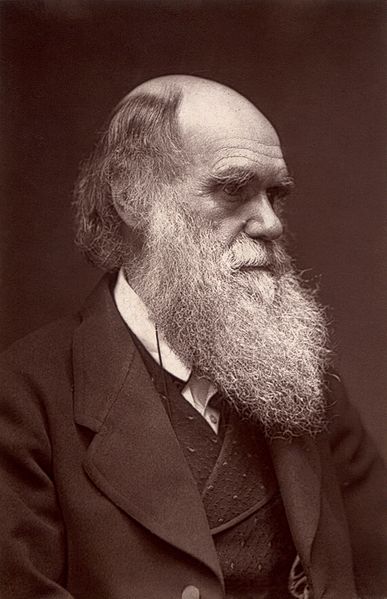 David - The week here at Cambridge has seen mostly older scholarly types in panel discussions or alone at the lectern, analysing, speculating, debating, and theorizing over every nuance of Charlie Darwin's existence. So, for a summary of the week, here's rap artist Baba Brinkman who covers every angle of every session in his hip-hop show, The Rap Guide to Evolution.
David - The week here at Cambridge has seen mostly older scholarly types in panel discussions or alone at the lectern, analysing, speculating, debating, and theorizing over every nuance of Charlie Darwin's existence. So, for a summary of the week, here's rap artist Baba Brinkman who covers every angle of every session in his hip-hop show, The Rap Guide to Evolution.
Baba - So whatcha know about natural selection?Go ahead and ask a question and see where the answer gets you.
Try the impassive aggressive or try smashing heads in and see which tactic brings your plans to fruition.
And if you have an explanation in mind then you're wasting your time coz the best watchmaker is blind.
It takes a certain base kind of impatient mind to explain away nature with intelligent design.
But the truth shall set you free from those useless superstitious beliefs of the literal Adam and Eve and that Edenic myth 'coz their family tree is showing some genetic drift.
Take it from this bald headed non-celibate monk with the lyrical equivalent of an elephant's trunk.
It's time to elevate your mind's state and celebrate your kinship with the primates.
The weak and the strong, who got it going on. We lived in the dark for so long.
The weak and the strong, Darwin got it going on. Creationism is dead wrong. Tell them Dawkins...
David Fisher - This Canadian rapper is no scientist. His area is medieval literature. After applying rap to the Canterbury tales, he was approached by a microbial genomist who asked if he could do for Darwin what he did for Chaucer. Baba read his way through a pile of books on evolutionary biology and out spawned his Darwin show, covering every aspect of the great man's work. And according to Baba, there's a curious similarity between the creation, sorry, the growth, the evolution of an artistic work and any living thing.
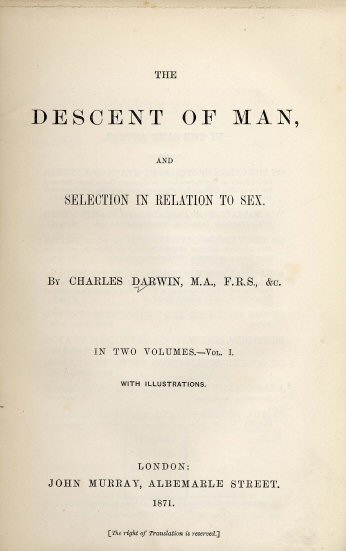 Baba Brinkman - When I first started writing the show back in January, early drafts of the script sounded a little bit like this:
Baba Brinkman - When I first started writing the show back in January, early drafts of the script sounded a little bit like this:
Yo!yo!The origin of species ain't no faeces.
Dawg, believe me.
Yeah!
And that was all I think of.
And then I thought, I thought. Well, maybe my show needs to get rewritten and sometimes, people ask me how does a show get written?
Like this, performance, feedback, revision.
And how do I generally develop my lyricism?
Kind of like this, performance, feedback, revision.
And how do human beings ever learn to do anything?
Like this, performance, feedback, revision.
And evolution is kind of just an algorithm, isn't it?
That goes like this, performance, feedback, revision.
So, really the genetic code of very living thing was written like this,
Performance, feedback, revision.
So, the genes are like a text with a thousand pages and revisions occur in the random changes that come from mutations and then when they...
Chris - That's rap artist Baba Brinkman from Canada who was able to be here in Cambridge touring with his rap, effectively Darwin set to a rap tune. He was talking to David Fisher who was an honorary member of The Naked Scientists for a week but you'll normally find him at ABC at Radio National in Sydney, Australia.
We've actually got a recording of that entire show and we're going to be publishing it for you as a special podcast on our website later this week. So, if you check out thenakedscientists.com/podcasts, then you should be able to listen to all of Baba Brinkman's show.

18:46 - This week in science history - The first demonstration of dynamite
This week in science history - The first demonstration of dynamite
Sarah Castor-Perry
This week in science history saw, in 1867, Alfred Nobel first demonstrate dynamite in the UK, at Merstham Quarry in Surrey. Nobel had invented dynamite two years earlier and this demonstration was the first step towards a lucrative UK patent for the substance.
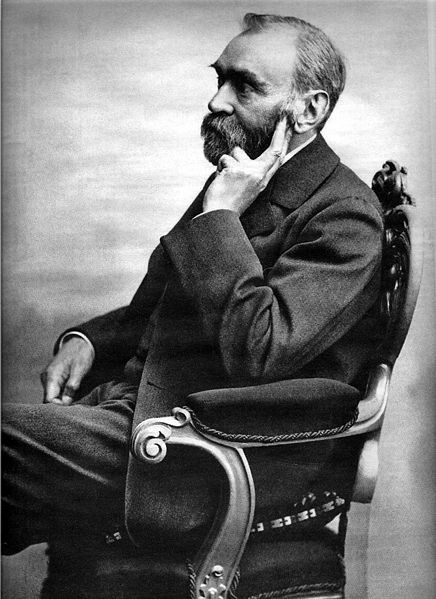 Most people would recognise the name Alfred Nobel from the prestigious Nobel Prizes, but his work on dynamite and later forms of explosives was what allowed him to build up the huge fortune that he left in his will to set the Nobel Prizes up. There are 5 prizes, first awarded in 1901 and which have been awarded annually, except for three years during the second World War, for eminence in Chemistry, Physics, Medicine or Physiology, literature and rendering services to international fraternity and peace-keeping.
Most people would recognise the name Alfred Nobel from the prestigious Nobel Prizes, but his work on dynamite and later forms of explosives was what allowed him to build up the huge fortune that he left in his will to set the Nobel Prizes up. There are 5 prizes, first awarded in 1901 and which have been awarded annually, except for three years during the second World War, for eminence in Chemistry, Physics, Medicine or Physiology, literature and rendering services to international fraternity and peace-keeping.
Before Nobel's work, the main explosives in use were gunpowder and nitroglycerine.
Gunpowder was discovered by Taoist monks in China in the 9th Century AD and is a mixture of sulphur, charcoal and potassium nitrate. It was used as a propellant for firearm weapons - rifles, pistols and cannons etc, and also as an explosive for mining and tunnel excavation (or to try and blow up a building, such as in the 1605 Gunpowder Plot to blow up the Houses of Parliament).
The main difference between gunpowder and dynamite is that gunpowder 'deflagrates', whereas dynamite (and other modern forms of explosive) 'detonate'. This basically means that gunpowder (a low explosive) burns, and dynamite (a high explosive) explodes - gunpowder will produce enough force to push a bullet out of the barrel of a gun, but not enough to explode the gun barrel itself.
Nitroglycerine was first synthesised in Italy in 1847 by nitrating glycerol. It was seen as a usable (and much more powerful) alternative to gunpowder. However, it is extremely dangerous - it is highly shock sensitive, meaning a physical shock will cause it to explode. Alfred Nobel's own brother Emil was killed in a Nitroglycerine factory explosion, and this was one of the factors that made him set about finding a way to make the transport and use of Nitroglycerine safer, whilst maintaining its powerful explosive properties.
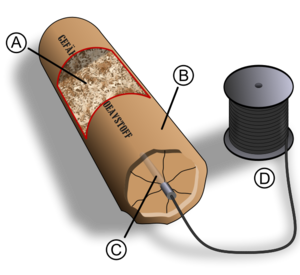 |
| A. Sawdust (or any other type of absorbent material) soaked in nitroglycerin. B. Protective coating surrounding the explosive material. C. Blasting cap. D. Electrical cable connected to the blasting cap. |
Nobel discovered that mixing nitroglycerine with an absorbent substance like diatomaceous earth (a sort of sedimentary sand) or sawdust and a small amount of sodium carbonate made it much more stable and safe to transport, but still delivered the high explosive power of the nitroglycerine compared to gunpowder. The mixture was formed into sticks and wrapped in paper - an image well known to anyone who has seen a spaghetti western film. It requires a small explosion from a 'blasting cap' to initiate the explosion of the dynamite. Nobel used a pyrotechnic one using flammable chemicals, but modern blasting caps may also set off explosions using electric charges. Originally, Nobel marketed dynamite as 'Nobel's Blasting Powder' and over the next few decades, he expanded his operations, and with his patents in several countries and shares in most dynamite-or-similar producing companies, he grew extremely wealt
Later developments that Nobel made included gelignite or blasting gelatine, that he invented in 1875 - made by dissolving nitrocellulose (itself highly explosive) in nitroglycerine and mixing it with wood pulp and sodium nitrate. This and innovations such as cordite, invented by two Britons, were safer than dynamite in that thy did not have the alarming habit of leaking nitroglycerine when stored for too long, and had more explosive power as the nitrocellulose used to stabilise the nitroglycerine was also a high explosive, unlike the stabilisers in dynamite. Blasting gelatine was widely used in Ireland during the War of Independence and into the 1960s by the IRA, before it was replaced by modern plastic explosives such as semtex.
Dynamite is still in use today, although with slightly different composition to Nobel's original mixture. Other forms of explosives such as semtex and C4 are also used in demolitions, commercial blasting and for military use.
It is said that the reason Nobel left such a large amount of his fortune to set up the Nobel Prizes is because he wanted a better lasting legacy than the invention of something that although has helped global industry to grow and thrive, also presented a way of killing more people faster than ever before. Given that most people know his name in relation to the Prizes rather than dynamite, and that the Prizes help to recognise and publicise global academic achievement, he seems to have succeeded in his wish.
Related Content
- Previous Egg Ventilation
- Next Here's Looking at You - the Science of Vision










Comments
Add a comment